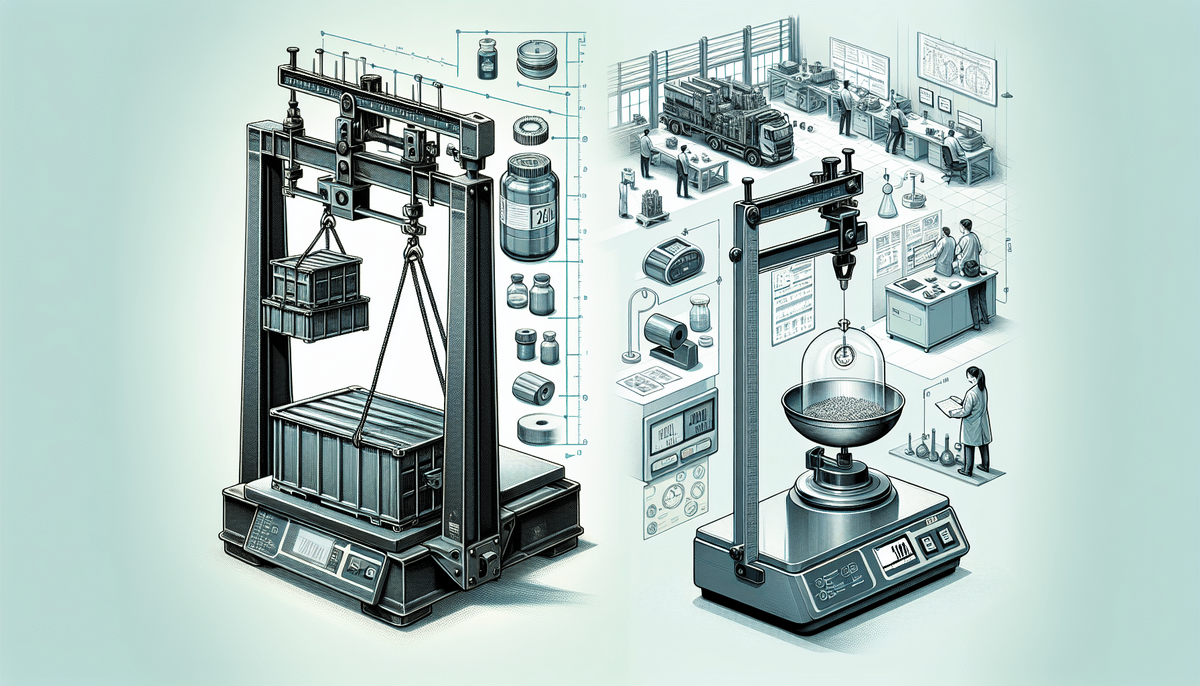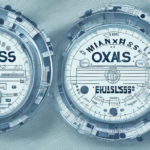Rice Lake RoughDeck vs Ohaus D51XW: A Comprehensive Comparison
In the realm of industrial weighing scales, the Rice Lake RoughDeck and the Ohaus D51XW are two leading models renowned for their precision and reliability. Both scales are meticulously engineered to cater to a wide array of weighing requirements, ensuring accurate and consistent results across various industrial applications. This comprehensive comparison explores the features, specifications, and performance of the Rice Lake RoughDeck and Ohaus D51XW, assisting you in determining which scale best aligns with your operational needs.
Introduction to Rice Lake RoughDeck and Ohaus D51XW
The Rice Lake RoughDeck is a heavy-duty industrial scale designed to handle substantial workloads with weight capacities reaching up to 30,000 lbs. Its robust construction ensures durability and reliability in challenging environments, making it a preferred choice for sectors like agriculture, construction, and transportation. On the other hand, the Ohaus D51XW is a high-precision scale with a maximum weight capacity of 10,000 lbs. It emphasizes accuracy and rapid measurements, making it ideal for applications where precision is paramount, such as in quality control laboratories and packaging operations.
Both scales are equipped with advanced features tailored to meet diverse industrial needs. While the Rice Lake RoughDeck offers modularity with multiple sizes and configurations, the Ohaus D51XW integrates cutting-edge weighing technologies, including dynamic weighing capabilities for accurate measurements of moving or unstable objects.
A notable difference between these scales lies in their connectivity options. The Rice Lake RoughDeck supports connections to printers, computers, and other weighing equipment via Ethernet, USB, and RS-232 ports, facilitating seamless integration into existing systems. In contrast, the Ohaus D51XW offers both wired and wireless connectivity, enabling effortless data transfer and remote monitoring capabilities, which are essential for modern, automated industrial environments.
Features and Specifications
Rice Lake RoughDeck
- Construction: Heavy-duty steel frame designed for harsh industrial environments.
- Weight Capacity: Up to 30,000 lbs.
- Accuracy: ±0.1% of full scale.
- Indicator: Stainless steel display, mountable on scale or remotely.
- Leveling: Adjustable feet for leveling on uneven surfaces.
- Load Cells: Choice of double-ended beam or compression load cells.
- Connectivity: Ethernet, USB, RS-232 ports.
- Storage: Capable of storing up to 100 unique IDs for load tracking.
The Rice Lake RoughDeck is engineered for longevity and seamless integration into industrial workflows. Its robust construction ensures stability and durability, while the extensive connectivity options facilitate smooth operation within existing systems. Additionally, the capability to store multiple load IDs enhances efficiency in tracking and managing large volumes of materials, streamlining operations and reducing manual intervention.
Ohaus D51XW
- Construction: Sturdy design with an IP66-rated stainless steel indicator.
- Weight Capacity: Up to 10,000 lbs.
- Accuracy: ±0.02 lb.
- Display: Large backlit LCD for easy readability.
- Data Transfer: Bi-directional RS232 port.
- Application Modes: Includes checkweighing, counting, and totalization.
- Dynamic Weighing: Capable of weighing unstable or moving samples.
- Power: Built-in rechargeable battery for portability.
The Ohaus D51XW distinguishes itself with its exceptional precision and versatile application modes. Its dynamic weighing capability is particularly advantageous in environments where samples may be moving or unstable, ensuring consistent accuracy. The inclusion of a built-in rechargeable battery enhances portability, allowing the scale to be used in various locations without the need for constant power connectivity, thereby increasing operational flexibility.
Comparison
Weighing Capacity
The Rice Lake RoughDeck supports weight capacities of up to 30,000 lbs, making it suitable for heavy-duty industrial applications such as large-scale manufacturing, shipping, and agriculture. Conversely, the Ohaus D51XW handles weights up to 10,000 lbs, positioning it effectively for scenarios requiring precise measurements of substantial but not excessive weights.
Accuracy
Accuracy is a critical factor in industrial weighing. The Rice Lake RoughDeck offers an accuracy of ±0.1% of its full scale, translating to ±30 lbs at maximum capacity. In contrast, the Ohaus D51XW provides higher precision with an accuracy of ±0.02 lb, making it ideal for applications where exact measurements are essential.
Studies indicate that enhanced accuracy in industrial scales can lead to significant improvements in inventory management and quality control [1].
Display Options
The Rice Lake RoughDeck is equipped with a stainless steel indicator that offers clear visibility and can be mounted directly on the scale or at a remote location. On the other hand, the Ohaus D51XW features a large backlit LCD display, ensuring readability in various lighting conditions, thus minimizing the risk of reading errors and enhancing user experience.
Connectivity
Connectivity options significantly influence the integration and functionality of industrial scales. The Rice Lake RoughDeck offers multiple connectivity options including Ethernet, USB, and RS-232 ports, allowing for comprehensive integration with existing industrial systems and data management tools. The Ohaus D51XW provides both wired and wireless connectivity, supporting seamless data transfer and enabling remote monitoring, which is crucial for modern automated industrial setups.
Durability
Both scales are designed to withstand harsh industrial environments. The Rice Lake RoughDeck features a heavy-duty steel frame that ensures resilience against physical impacts and extreme conditions. Meanwhile, the Ohaus D51XW boasts an IP66-rated stainless steel indicator, offering excellent resistance to water and dust ingress, making it suitable for environments where exposure to such elements is prevalent.
Price
Price is a pivotal consideration in selecting industrial scales. The Rice Lake RoughDeck is generally priced higher due to its extensive weight capacity and robust construction, representing an investment for operations requiring heavy-duty performance and long-term reliability. In contrast, the Ohaus D51XW is more affordable, offering significant value through its precision and versatile functionality, making it a cost-effective choice for businesses requiring accurate measurements without necessitating extreme weight capacities.
User Reviews
User feedback provides invaluable insights into the performance and reliability of industrial scales in real-world applications. The Rice Lake RoughDeck has received commendations for its sturdy build and ability to consistently handle heavy loads. Users appreciate its durability and the efficiency gains from its advanced connectivity options. However, some have noted that the scale's substantial weight makes transportation challenging, and assembly can be complex for those without technical expertise.
Similarly, the Ohaus D51XW has garnered positive reviews for its high precision and user-friendly interface. The multiple application modes are praised for their adaptability to various industrial tasks. Users also value the scale's portability, thanks to its rechargeable battery. On the downside, some users have pointed out the lower weight capacity as a limitation for certain applications, necessitating careful consideration of operational needs before selection.
Pros and Cons
Rice Lake RoughDeck
- Pros:
- High weight capacity up to 30,000 lbs.
- Robust steel construction for enhanced durability.
- Multiple connectivity options for seamless system integration.
- Adjustable feet facilitate leveling on uneven surfaces.
- Cons:
- Higher price point compared to other industrial scales.
- Heavy weight may pose transportation and installation challenges.
- Complex assembly process may require professional assistance.
Ohaus D51XW
- Pros:
- Exceptional precision with ±0.02 lb accuracy.
- Versatile application modes including checkweighing, counting, and totalization.
- Large backlit LCD display enhances readability in various lighting conditions.
- Built-in rechargeable battery offers portability and flexibility.
- Cons:
- Lower weight capacity may not suit all industrial requirements.
- Smaller scale size limits use for extremely large items.
- Less robust compared to heavy-duty scales like the RoughDeck.
Conclusion: Which Scale is Better Suited for Your Needs?
Both the Rice Lake RoughDeck and the Ohaus D51XW offer distinctive features tailored to different industrial weighing requirements. If your operations involve handling heavy-duty loads and demand a durable, high-capacity scale, the Rice Lake RoughDeck emerges as the optimal choice. Its robust construction and extensive weight capacity make it a reliable asset in demanding environments, enhancing operational efficiency and reducing downtime.
Conversely, if your needs prioritize high precision, versatility in application modes, and a more affordable investment, the Ohaus D51XW stands out as the superior option. Its advanced features and user-friendly design cater to operations where accurate measurements are critical, such as in quality assurance and packaging processes.
Ultimately, the decision should align with your specific operational demands, budget considerations, and environmental conditions. Assessing these factors will ensure the selection of a scale that not only meets your immediate requirements but also supports long-term operational success and accuracy.








